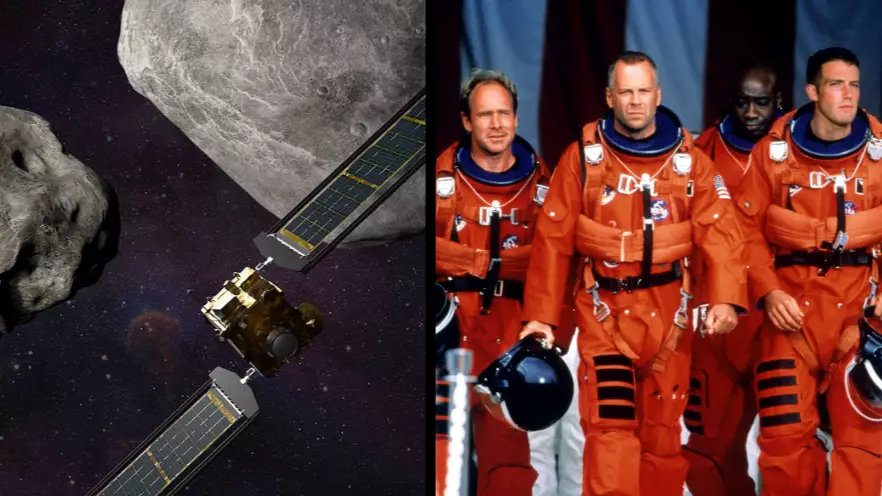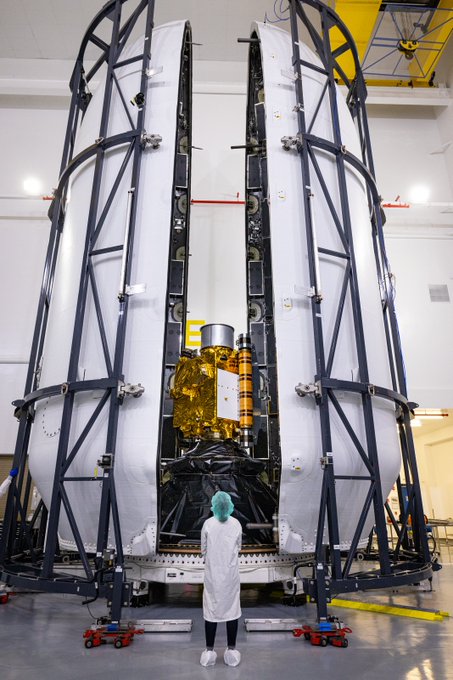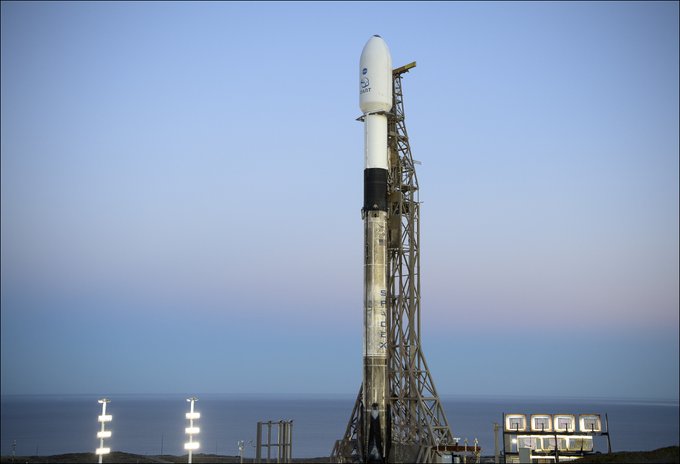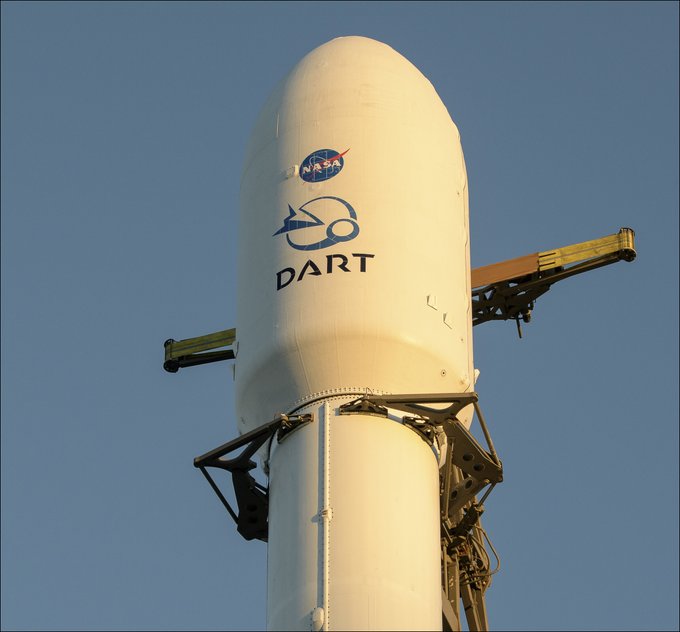
NASA is about to go full Armageddon by launching a Double Asteroid Redirection Test (DART) to prepare for any rogue asteroids that come flying towards Earth.
After years of study, NASA is launching its first space probe which will aim to hit an asteroid and alter its speed and course.
The DART is an un-crewed spacecraft that will be attached to a SpaceX rocket. It will then embark on a 10-month collision course with a small moon named Dimorphos.
The spacecraft, which is around the size of a golf cart, will hit Dimorphos at almost 25,000 km per hour and will hopefully (marginally) impact the moon's speed and orbit.
Advert
The theory is that with enough preparation time, humans will be able to transfer enough energy into a speeding rock to alter its trajectory and force it away from a collision with Earth.
The number one goal of course is to avoid an impact on the level of the one that took out the dinosaurs. As recently as 2013 a meteor the size of a four-storey building exploded in Russia, which injured more than 1,600 people.
"This test is to demonstrate that this technology is mature enough so that it would be ready if an actual asteroid impact threat were detected," Lindley Johnson, NASA's planetary defence officer, said.
Advert
Andy Cheng, lead investigator for the mission at Johns Hopkins University's Applied Physics Laboratory, which built and manages the spacecraft, told Bloomberg the test was to see how much the impact would affect the rock.
"It's all about measuring the momentum transfer: How much momentum do we put into the asteroid by hitting it with the spacecraft?" he said.
DART will use laser targeting and high-resolution technology to autonomously select an impact point on the target. It will send images back to Earth throughout the process, both from the craft and from a nearby satellite.
The test has been described as 'one of the most consequential missions ever undertaken by NASA', but the DART process has been long-running and part of several other processes to protect Earth from asteroids.
Advert
The space agency said: "While no known asteroid larger than 140 metres in size has a significant chance to hit Earth for the next 100 years, less than half of the estimated 25,000 [near-Earth objects] that are 140 metres and larger in size have been found to date."
Should DART be successful, NASA already has a number of other trajectory-altering plans in the pipeline.
This includes a 'gravity tractor', which would see a small spacecraft attached to an asteroid and change its orbit by enlarging its mass.
Featured Image Credit: NASA/Johns Hopkins, APL/Steve Gribben/Touchstone

